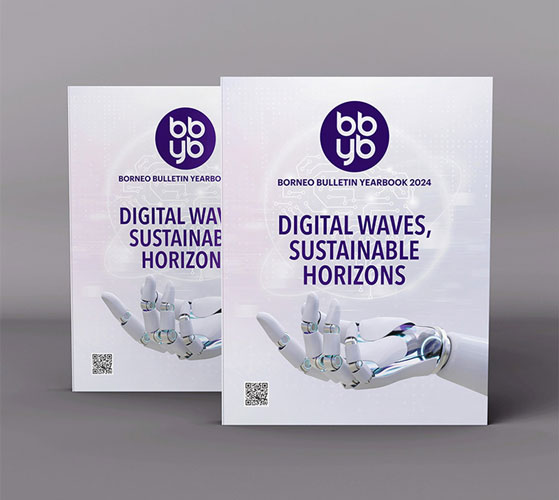Where does our food come from?
Yes, readers, this may be a profound question to ponder on a weekend morning. However, with the fruit season in full swing, the bounty of the tropics is inescapable as markets, roadsides, and parking spaces bloom with fruit vendors peddling the much-anticipated and beloved king of fruit, the durian.
In today’s fast-paced world, the demand and consumption of durian have fortunately adapted with the times, offering multiple avenues to access and enjoy this thorny fruit.
From home-based durian buffets, where vendors charge a fixed price for an all-you-can-eat experience featuring local (kampong) durians, to retailers offering imported hybrid varieties like the Blackthorn and Musang King, which pack a punch both in taste and price, attitudes towards durian have become quite nuanced.
Moreover, with their growing popularity in eastern markets like China and South Korea, and the fruit becoming emblematic of Southeast Asia both in the realm of farming and culture, it is heartening to see durian getting its moment in the spotlight – and not just for its smell.
But even within our culture that holds this fruit in reverence, are we truly aware of the labour and effort it takes to bring these spiky sensations from the farm to our dining room tables?
ECHOES OF A GOLDEN AGE
Last week, I had the rare opportunity to participate in traditional durian harvesting during a short trip to a relative’s fruit orchard in Sipitang, Sabah, Malaysia. This journey was more meaningful for my parents, who, as my father would say, are entering their “seven-series era” – their 70s.
Growing up as Kedayan and Dusun, my parents lived an agricultural lifestyle out of necessity. Now, in their golden years, despite their career successes, they often feel a profound nostalgia for the lives they left behind – a life filled with nature, nurture and endless bounty.
The orchard visit was a bittersweet reminder of simpler times, a fleeting glimpse into a past that still holds a cherished place in their hearts.
I still recall the numerous lectures I would get whenever I was late for school, my mum often reminding me that hours before dawn, she would be awake along with my uncles and late grandparents to tend to their paddy fields.
“All before going to school,” she would tell me.
“We wouldn’t even have time to shower and had to trek through thick jungles, with only calamansi juice spread between our hands to hide the smell of our sweat,” she shared.
Though blissfully unaware at the moment, these stories that have been woven into my upbringing tell of the hard work and resilience of a generation deeply connected to the land – a connection that, in moments like our orchard visit, feels fleeting yet profoundly significant.
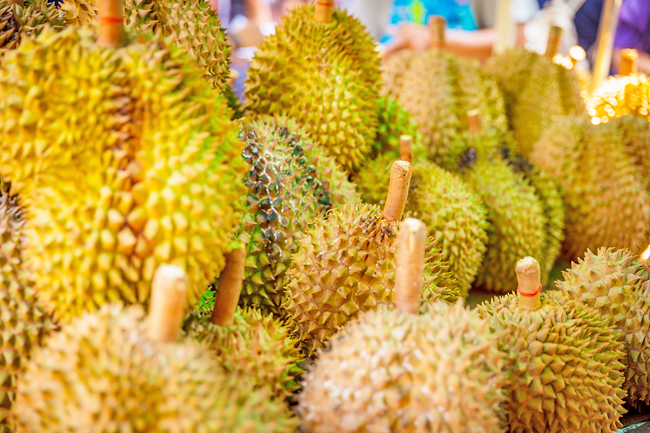
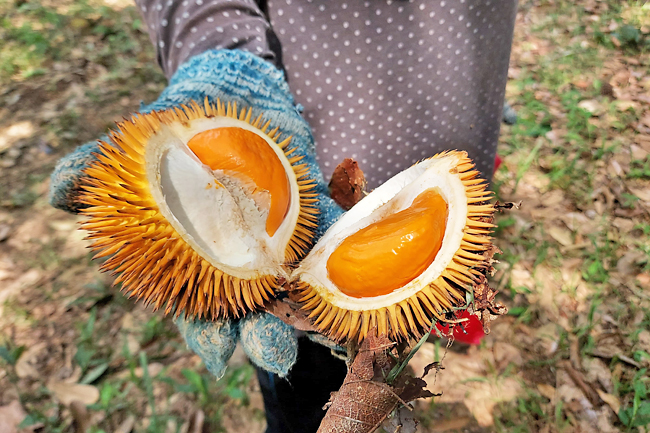
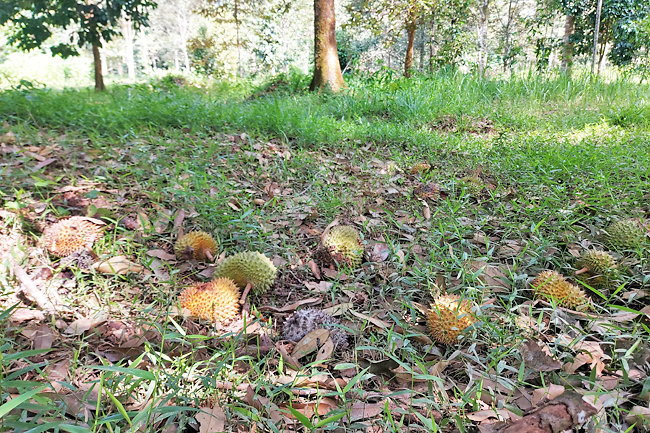
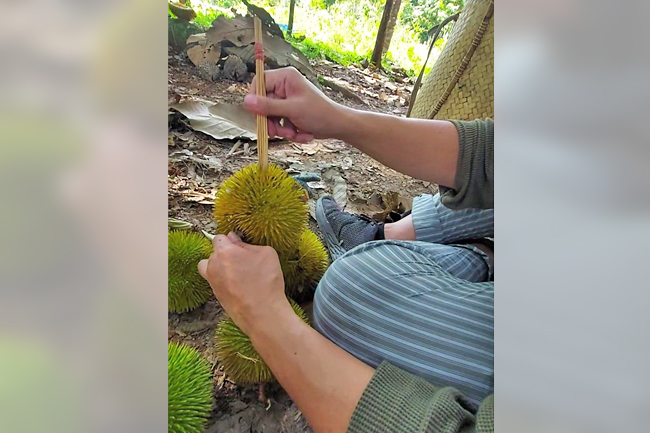
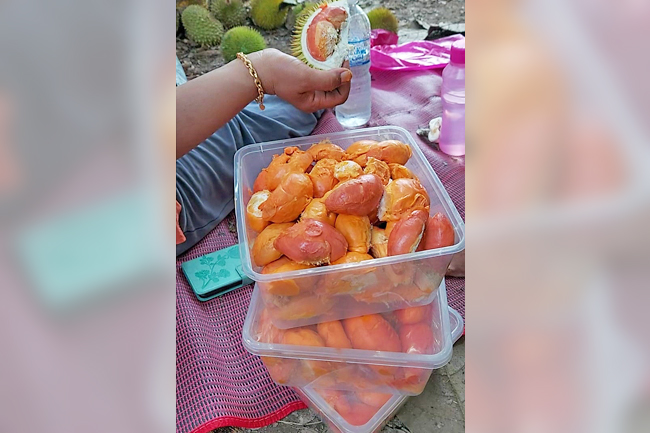
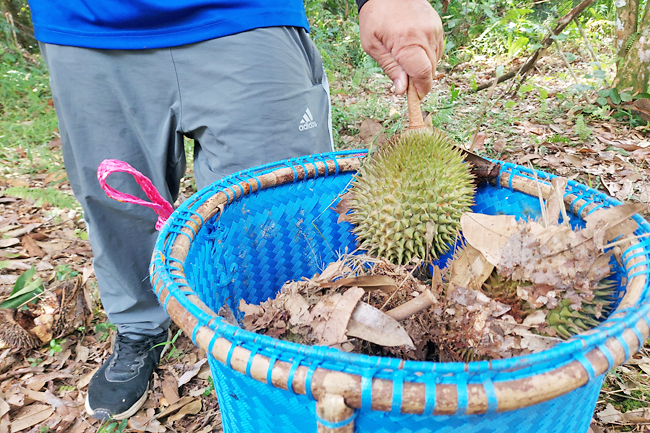
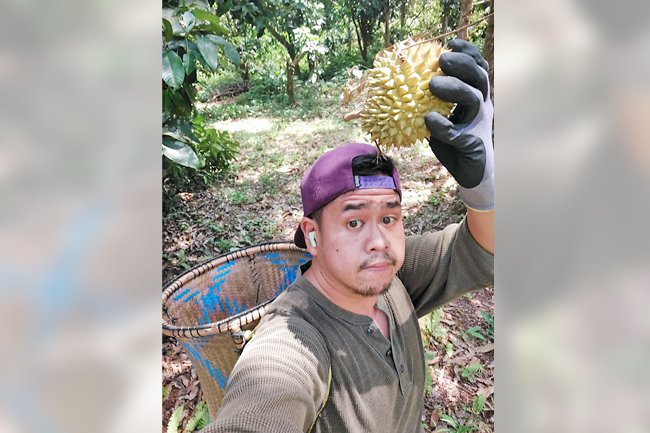
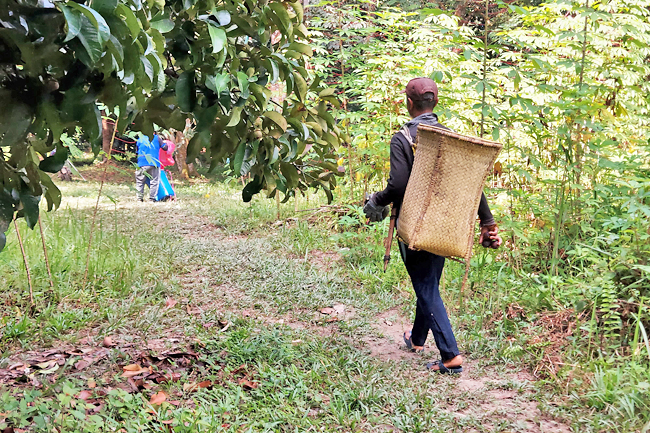
THE HARVEST BEGINS
Located at Jalan Ulu Sipitang, the fruit orchard spanned three hectares and contained over 50 durian trees, including the white, yellow, and red varieties. Community-owned and run, during the durian season, members of the community would be assigned days of the week for their harvest.
The beauty of this orchard lies in the generations that have tended it and the generations it has fed. For the people of rural Sipitang, where employment opportunities may be scarce, the fruit season becomes a great equaliser, fetching them enough income to last a few months, if not more.
Our durian harvesting excursion began on a muggy Sunday morning, with the sun out in full force. Fortunately, the giant fruit trees surrounding us easily blotted out the sky. But make no mistake, the heat was still palpable as the heavy humidity set in.
As the youngest and most able-bodied among an entourage of the elderly or those well on their way, expectations for the more labourious activities fell on my “gung-ho and raring to go” yet weak shoulders.
The idea of lugging my own harvest of durians with my own takiding was exciting. But let’s not forget that durians are hard, sharp, and extremely heavy when put together.
The takiding, a traditional woven basket with shoulder straps, is often used in agriculture by the different ethnic groups that can be found in Borneo and the region.
Maybe it was my weak physique, maybe it was the takiding strap made from braided plastic rope, or maybe it was the fact that I had to make seven or eight trips between the middle of the orchard and our vehicle to transfer the full takidings of durian.
It took a lot of work and strength, and unfortunately, I have the bruises to prove it.
The act of harvesting durians itself is simple; one only needs to pick those that have fallen from the tree. With just a pair of gloves, some safety boots, and climate-appropriate clothing, you’re good to go.
I was the designated mule, so while my entourage’s main function was to collect and pile the fallen durians, I came by to store these heaps into my takiding and bring them wherever they needed to go, whether to be opened by my aunts or to be sent for transport.
But what was not so apparent was all the work that happens afterward. Have you noticed how durians are almost spotless when you find them being sold in the market?
My relative, the orchard owner, shared how some of the durian trees have been cultivated since the 80s, and some even older, so durian harvesting is like second nature for him.
Leading us with his own takiding, he had a group of wooden skewers tied together with a rubber band.
This oddly deceptive tool is actually used to clean the durians from all the foliage and debris that inevitably get lodged between their spikes.
The skewers act more like a hardened brush, creating the most satisfying rattling sound.
COMMUNAL BOUNTY
Due to the sheer volume of durians we harvested, most if not all of the durians had to be opened and stored in different containers.
From the gassy hybrids and the sweet local white durians to the creamy red ‘utak udang galah’, I had to learn to open these different varieties, not only as a means of learning but because the activity itself, which is fairly tedious, is much more enjoyable with a companion.
With each durian fruit I opened, a cousin would be close by to guide my blade, and if I had done the job right, they would assist in storing the durian flesh into containers.
The durian harvesting may have taken us just under six hours, but the cleaning, opening, and storing took a whole day in itself. Uncles, aunts, and cousins from multiple households chipped in to handle what must have been hundreds of kilogrammes of fresh durian.
This is what is truly beautiful about the fruit season – how we can only enjoy our tropical harvest as a community.
In the Kedayan community, the harvest season is marked by Makan Tahun, while in the Dusun community, the harvest is celebrated through Adau Gayoh.
For Bruneians and Borneans, our tropical fruits are cherished. They come every year, and each year they are embraced with fervour because the fruit season is not just a time for delights; it’s a season of kinship and community.
Rest assured, readers, as we packed the numerous containers of the cloyingly sweet king of fruits, ready to bring them back home, the literal fruits of our labour were served and enjoyed by many of our loved ones.
The joy and connection we felt in those moments, sharing the bounty of our efforts, were truly special.
It is my hope that this cherished tradition, filled with hard work, laughter, and togetherness, will continue to be experienced and enjoyed by future generations, keeping our bonds and heritage alive. – Wardi Wasil

